Sex differences in the effects of prematurity and/or low birthweight on neurodevelopmental outcomes: systematic review and meta-analyses
- PMID: 37434174
- PMCID: PMC10334669
- DOI: 10.1186/s13293-023-00532-9
Sex differences in the effects of prematurity and/or low birthweight on neurodevelopmental outcomes: systematic review and meta-analyses
Abstract
Background: Premature birth and/or low birthweight have long-lasting effects on cognition. The purpose of the present systematic review is to examine whether the effects of prematurity and/or low birth weight on neurodevelopmental outcomes differ between males and females.
Methods: Web of Science, Scopus, and Ovid MEDLINE were searched for studies of humans born premature and/or of low birthweight, where neurodevelopmental phenotypes were measured at 1 year of age or older. Studies must have reported outcomes in such a way that it was possible to assess whether effects were greater in one sex than the other. Risk of bias was assessed using both the Newcastle-Ottawa scale and the National Institutes of Health Quality assessment tool for observational cohort and cross-sectional studies.
Results: Seventy-five studies were included for descriptive synthesis, although only 24 presented data in a way that could be extracted for meta-analyses. Meta-analyses found that severe and moderate prematurity/low birthweight impaired cognitive function, and severe prematurity/low birthweight also increased internalizing problem scores. Moderate, but not severe, prematurity/low birthweight significantly increased externalizing problem scores. In no case did effects of prematurity/low birthweight differ between males and females. Heterogeneity among studies was generally high and significant, although age at assessment was not a significant moderator of effect. Descriptive synthesis did not identify an obvious excess or deficiency of male-biased or female-biased effects for any trait category. Individual study quality was generally good, and we found no evidence of publication bias.
Conclusions: We found no evidence that the sexes differ in their susceptibility to the effects of severe or moderate prematurity/low birthweight on cognitive function, internalizing traits or externalizing traits. Result heterogeneity tended to be high, but this reflects that one sex is not consistently more affected than the other. Frequently stated generalizations that one sex is more susceptible to prenatal adversity should be re-evaluated.
Keywords: Birthweight; Cognition; Cognitive function; Externalizing problems; Gender; Internalizing problems; Prematurity; Sex differences; Systematic review.
Plain language summary
Early life environmental conditions and adversities affect health into adulthood. For example, it is well-known that premature birth and low birthweight have long-lasting effects on the development and functioning of the brain, affecting various aspects of academic performance, intelligence, and the risk of behavioural problems including depression, anxiety, aggression, impulsivity, and inattention. However, it is not clear if these effects differ between boys and girls. We searched for studies examining the effects of prematurity and/or of low birthweight on cognitive abilities and behavioural problems in children measured at 1 year of age or older, and identified 75 relevant studies. Combining the results of studies found that prematurity/low birthweight decreased measures of intelligence and increased the incidence of behavioural problems, as expected. However, there was no indication that the effects of prematurity/low birthweight consistently differed between males and females, and there were no specific traits where boys appeared to be more or less susceptible to the effects of prematurity/low birthweight than girls. While sex and gender influence health, and in many cases will influence the effects of early life conditions on health, our study shows that prematurity and low birthweight have similar long-term effects on intelligence and behaviour in boys and girls.
© 2023. The Author(s).
Conflict of interest statement
The authors declare that they have no competing interests.
Figures
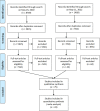
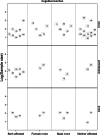
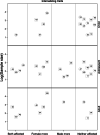
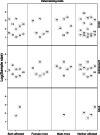
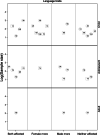





Similar articles
-
Systemic pharmacological treatments for chronic plaque psoriasis: a network meta-analysis.Cochrane Database Syst Rev. 2021 Apr 19;4(4):CD011535. doi: 10.1002/14651858.CD011535.pub4. Cochrane Database Syst Rev. 2021. Update in: Cochrane Database Syst Rev. 2022 May 23;5:CD011535. doi: 10.1002/14651858.CD011535.pub5. PMID: 33871055 Free PMC article. Updated.
-
Systemic pharmacological treatments for chronic plaque psoriasis: a network meta-analysis.Cochrane Database Syst Rev. 2017 Dec 22;12(12):CD011535. doi: 10.1002/14651858.CD011535.pub2. Cochrane Database Syst Rev. 2017. Update in: Cochrane Database Syst Rev. 2020 Jan 9;1:CD011535. doi: 10.1002/14651858.CD011535.pub3. PMID: 29271481 Free PMC article. Updated.
-
Prenatal administration of progestogens for preventing spontaneous preterm birth in women with a multiple pregnancy.Cochrane Database Syst Rev. 2019 Nov 20;2019(11):CD012024. doi: 10.1002/14651858.CD012024.pub3. Cochrane Database Syst Rev. 2019. PMID: 31745984 Free PMC article.
-
Prenatal administration of progestogens for preventing spontaneous preterm birth in women with a multiple pregnancy.Cochrane Database Syst Rev. 2017 Oct 31;10(10):CD012024. doi: 10.1002/14651858.CD012024.pub2. Cochrane Database Syst Rev. 2017. Update in: Cochrane Database Syst Rev. 2019 Nov 20;2019(11). doi: 10.1002/14651858.CD012024.pub3. PMID: 29086920 Free PMC article. Updated.
-
Sertindole for schizophrenia.Cochrane Database Syst Rev. 2005 Jul 20;2005(3):CD001715. doi: 10.1002/14651858.CD001715.pub2. Cochrane Database Syst Rev. 2005. PMID: 16034864 Free PMC article.
Cited by
-
Sex-based disparities in DNA methylation and gene expression in late-gestation mouse placentas.Biol Sex Differ. 2024 Jan 6;15(1):2. doi: 10.1186/s13293-023-00577-w. Biol Sex Differ. 2024. PMID: 38183126 Free PMC article.
-
Association of birthweight and risk of incident dementia: a prospective cohort study.Geroscience. 2024 Aug;46(4):3845-3859. doi: 10.1007/s11357-024-01105-3. Epub 2024 Mar 4. Geroscience. 2024. PMID: 38436791 Free PMC article.
-
Mortality from external causes in late adolescence and early adulthood by gestational age and sex: a population-based cohort study in four Nordic countries.BMC Med. 2024 Nov 4;22(1):506. doi: 10.1186/s12916-024-03731-2. BMC Med. 2024. PMID: 39497121 Free PMC article.
-
Functional connectivity of the superior temporal sulcus at term-equivalent age: effects of gestational age and sex.Brain Struct Funct. 2025 Jul 26;230(7):123. doi: 10.1007/s00429-025-02979-5. Brain Struct Funct. 2025. PMID: 40715850 Free PMC article.
-
The role of gonadal hormones and sex chromosomes in sex-dependent effects of early nutrition on metabolic health.Front Endocrinol (Lausanne). 2023 Dec 22;14:1304050. doi: 10.3389/fendo.2023.1304050. eCollection 2023. Front Endocrinol (Lausanne). 2023. PMID: 38189044 Free PMC article. Review.
References
-
- Sacchi C, Marino C, Nosarti C, Vieno A, Visentin S, Simonelli A. Association of intrauterine growth restriction and small for gestational age status with childhood cognitive outcomes: a systematic review and meta-analysis. JAMA Pediatr. 2020;174:772–781. doi: 10.1001/jamapediatrics.2020.1097. - DOI - PMC - PubMed
Publication types
MeSH terms
LinkOut - more resources
Full Text Sources

